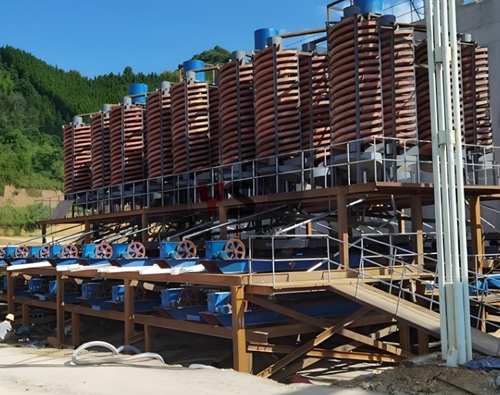

The cut-off grade for rutile placer deposits is 1 kg/m³, with a minimum industrial grade requirement of 2 kg/m³. The mining technical conditions require a minable thickness of no less than 0.5 meters, and the waste rock removal must meet an economic stripping ratio of ≤4. For ilmenite placer deposits, the grade requirements are higher, with a cut-off grade of 10 kg/m³ and a minimum industrial grade of 15 kg/m³. The minable thickness ranges between 0.5 and 1 meter, and the waste rock removal thickness also requires 0.5–1 meter. These minerals are essential raw materials for extracting titanium metal and are widely used in industries such as aerospace and chemical manufacturing.

The grade assessment of tin placer deposits employs two methodological systems. The chemical analysis method is suitable for residual-slope deposit types, with a cut-off grade of 0.02% Sn by mass and an industrial grade requirement of 0.04%. The panning method is primarily used for river placer deposits, requiring a cut-off grade of 100–150 g/m³ of cassiterite content and an industrial grade of 200–300 g/m³, with the additional requirement that the cassiterite purity must have a Sn mass fraction of ≥60%. Both methods require a minable thickness of ≥0.5 meters and a waste rock removal thickness of ≥2 meters, reflecting the specific geological conditions for tin placer mining.
The indicators for these minerals are measured in grams per cubic meter (g/m³), with significant variations among different mineral types. For columbite and fergusonite, the cut-off grade ranges from 5 to 50 g/m³, with an industrial grade requirement of 20–250 g/m³, a minable thickness of ≥0.5 meters, and a waste rock removal standard of 2 meters (stripping ratio of 1:1). Zircon has a cut-off grade of 1,000–1,500 g/m³ and an industrial grade requirement of 4,000–6,000 g/m³. Monazite has the most comprehensive indicator system, with a cut-off grade of 100–200 g/m³, an industrial grade of 200–250 g/m³, a ore block grade requirement of 280–250 g/m³, and an overall deposit grade requirement of no less than 500 g/m³. Xenotime has a cut-off grade of 30–50 g/m³ and an industrial grade requirement of ≥50 g/m³, with a minable thickness of 1 meter and a waste rock removal thickness of 2 meters.
The economic value of coastal placer mining is influenced by multiple factors. The primary factor is the grade indicator, followed by deposit conditions (such as minable thickness and waste rock removal thickness requirements), which directly impact mining costs and profits. The stripping ratio, as an important economic indicator, has specific requirements for different mineral types, such as ≤4 for rutile deposits and 1:1 for rare metal deposits. Additionally, factors such as deposit occurrence conditions, mining methods, and mineral processing technologies also significantly affect the mining value of coastal placer deposits.
Before processing coastal placer deposits, it is recommended to adopt a comprehensive evaluation approach that considers both grade indicators and geological mining conditions. For low-grade deposits, resource utilization efficiency can be improved by rationally configuring mineral processing equipment and optimizing the beneficiation process. Simultaneously, the comprehensive recovery of multiple valuable components in coastal placer deposits can enhance economic benefits.